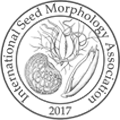Seed ID Forum › Seed ID Forum › Seed Morphology and Identification › Brassica sp. ID
This topic contains 5 replies, has 2 voices, and was last updated by ID00001802fde1e704db4880eb150437c7ed58c5d7795d1aa 1 year, 6 months ago.
-
AuthorPosts
-
August 26, 2022 at 9:15 am #602
Hello,
I would like to ask some help to identify some Brassica species. I worked on a Brassica oleracea sample and I found other Brassica specie (I think) and I’m wondering if It can be Brassica tournefortii or not… I take a photo of the unknown seeds with some Brassica juncea seeds but I don’t think it could match. Sorry, Brassica juncea seeds are from an old seeds sample.Thank you so much.
Best regards,
SilviaAttachments:
You must be logged in to view attached files.August 31, 2022 at 2:44 pm #604Hello Silvia,
Brassica spp. seeds are often difficult to distinguish, good job in spotting the different looking seeds in your B. oleracea sample! I will do my best to help.
Could you please take a picture of a seed or seeds with the hilum area facing the camera please? It looks like a darker colour than the rest of the seed.
Do you know the country the crop was produced?
Thanks, Jennifer
September 1, 2022 at 12:24 pm #605Hello Jennifer,
this is the best I can get as photo, I hope it will help you and yes, the hilum is more dark that the rest of the seed, even black. On the right of the unknown seed there is a Brassica oleracea of the sample. We usually use Mantis magnifying glass to analyse Brassica species and it’s very usefull to spot different testa texture. And Tagarno to take photos.
The crop was produced in France.Thank you so much,
Silvia
September 1, 2022 at 12:38 pm #608I try again…
Attachments:
You must be logged in to view attached files.September 8, 2022 at 2:08 pm #616Hello Jennifer,
we have been analyzing B. carinata (I take a photo from one of our sample) since few years for our customers. This is sowing furthermore in France as cover crop and also enhanced as animal food but the production is predominant in Africa.
I think that our unknown seed surface reticulation is thicker than B. carinata and has also wider interspaces (as alveolate aspect).
What do you think about it?This is a very interesting exchange!
Best ,
SilviaAttachments:
You must be logged in to view attached files.September 25, 2022 at 10:50 am #620Hello Jennifer,
I will try to search new information…Thank you for your help.
Best regards,
Silvia
-
AuthorPosts
You must be logged in to reply to this topic.



